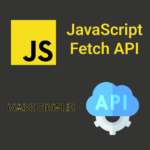Python is a high-level, interpreted programming language. It was first released in 1991 by Guido van Rossum, and it has since become one of the most popular programming languages in the world. Python is known for its simple syntax, readability, and versatility. It is often used in areas such as web development, data science, machine learning, and artificial intelligence.
One of the reasons for Python’s popularity is its extensive standard library, which provides a wide range of modules and tools for various tasks. Additionally, there is a large and active community of Python developers who contribute to open-source projects and provide support to others.
It is dynamically typed, which means that variables do not need to be declared with a specific data type before they are used. This can make the code easier to write and read. It is also supports multiple programming paradigms, including object-oriented, functional, and procedural programming.
Some of the notable features of Python include:
- Simple and easy-to-read syntax
- Interpreted nature
- Dynamic typing
- Automatic memory management
- Large standard library
- Cross-platform support
- Extensibility through third-party modules
- Support for multiple programming paradigms
Overall, Python is a powerful and versatile programming language that is widely used in many industries and applications.
Download
Python Code
Here is an example Python code that prints “Hello, world!” to the console:
print("Hello, world!") This is a very simple program that demonstrates the use of the print() function in Python. The print() function is used to output text to the console.
Here is another example that prompts the user to enter their name, and then greets them:
name = input("What is your name? ")
print("Hello, " + name + "!") In this code, we use the input() function to prompt the user to enter their name. The input() function waits for the user to enter some text and press enter. The text that the user enters is then stored in the name variable.
We then use the print() function to output a greeting that includes the user’s name. The + operator is used to concatenate (join together) the strings “Hello, ” and the value of the name variable, and the resulting string is printed to the console.
These are just two simple examples of code, but Python can be used to write much more complex programs as well.






